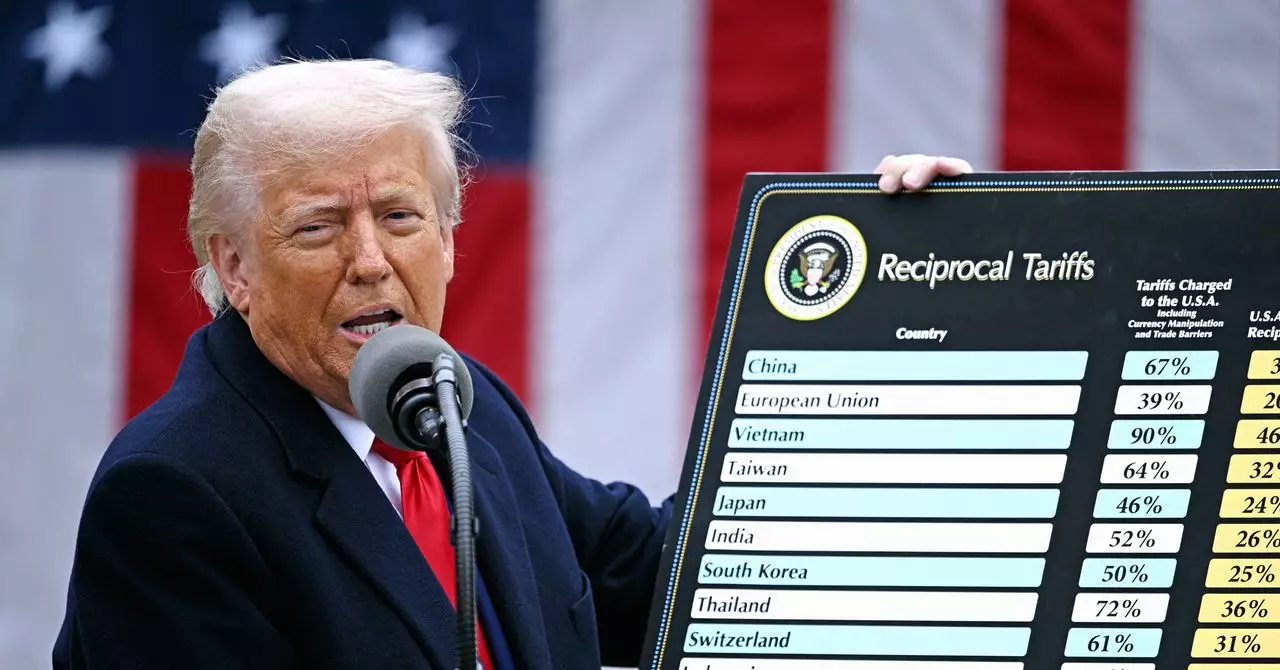The de minimis exemption has emerged as a cornerstone in the thriving landscape of online shopping, particularly for American consumers purchasing from international vendors like Shein and Temu. This essentially allows packages valued under $800 to be imported without incurring tariffs, fostering accessibility and competitive pricing in the retail market. As a result, these Chinese marketplaces have proliferated, offering a plethora of affordable goods that resonate well with budget-conscious American shoppers. However, the absence of duties has also created a nuanced dilemma for other platforms like eBay and Etsy, which serve as vital conduits for U.S. buyers seeking products from global sellers. The imminent threat of eradicating this exemption raises critical questions about the future of online commerce—especially for those who rely on it as a primary source of income and material goods.
The Impending Shift in Policy
Former President Trump’s directive to abolish the de minimis provision, slated for May 2, injects uncertainty into the retail ecosystem. The sheer scale of packages affected—potentially millions—demands meticulous attention from U.S. Customs and Border Protection (CBP). Their past inability to manage vast surges of package inspections reveals a troubling gap between policy ambitions and operational capabilities. Unlike in the past, where tariffs were more straightforward, the current environment presents a labyrinth of complexities that could drastically reshape consumer habits. The abrupt termination of the duty-free exemption could aggravate not only consumers but also platforms like Amazon, which has recently pivoted to offer budget-friendly Chinese imports to compete with up-and-coming brands like Temu and Shein.
Strategic Responses from Industry Leaders
Amid this chaotic milieu, companies find themselves either scrambling or strategically adapting to the shifting landscape. Ram Ben Tzion, a prominent figure in e-commerce logistics, succinctly articulates the gravity of the situation, stating that abolishing the de minimis exemption could rebalance the scales of competition. For many retailers, especially smaller businesses, the implications of rising tariffs could be seismic, pushing them out of an already competitive market. Yet, there is also a silver lining. Tech firms with established prowess in logistics and customs may see these challenges morph into opportunities. By offering new solutions tailored to navigating tariff complexities, they position themselves uniquely in a turbulent environment.
The Alternative Economic Opportunities
Companies already entrenched in the logistics sector, like Palantir and Nuvocargo, may ride a wave of growing demand as they unveil products aimed at helping businesses navigate new tariff landscapes. For instance, Palantir has promptly leveraged the announcement of future tariffs to market its AI-driven tools designed to harmonize logistical operations within this challenging framework. Meanwhile, Nuvocargo, closely monitoring cross-border transactions, anticipates increased activity as more businesses grapple with newfound customs documentation requirements. Paradoxically, while tariffs are generally perceived as a hurdle, they can also inadvertently ignite ventures that offer valuable problem-solving services.
The Ripple Effect of Uncertainty
However, not all facets of this impending change are optimistic. The unpredictable adjustments to tariffs create chaos within supply chains, leaving shippers and importers grappling with rising costs and operational inefficiencies. Jay Gerard, who leads customs and logistics for Nuvocargo, paints a vivid picture of the turmoil surrounding these recent developments. The fleeting announcement of 25 percent tariffs on imports from Mexico and Canada incited confusion and financial burdens for many businesses, highlighting the disarray ushered in by erratic policy changes. Importers suddenly faced costs that overshadowed their standard operations, with no assurance of clarity or stability on the horizon.
In this increasingly dynamic landscape, the fabric of e-commerce undergoes transformation. While some will thrive, adapt, and seize the opportunity, others may find themselves overwhelmed by the fast-paced changes enforced by policy intentions. The balance of power in retail will likely fluctuate as organizations recalibrate their strategies in order to survive and capitalize in an uncertain future. The unfolding narrative of e-commerce is one of resilience and resourcefulness; the question is who will adapt best, and at what cost?

